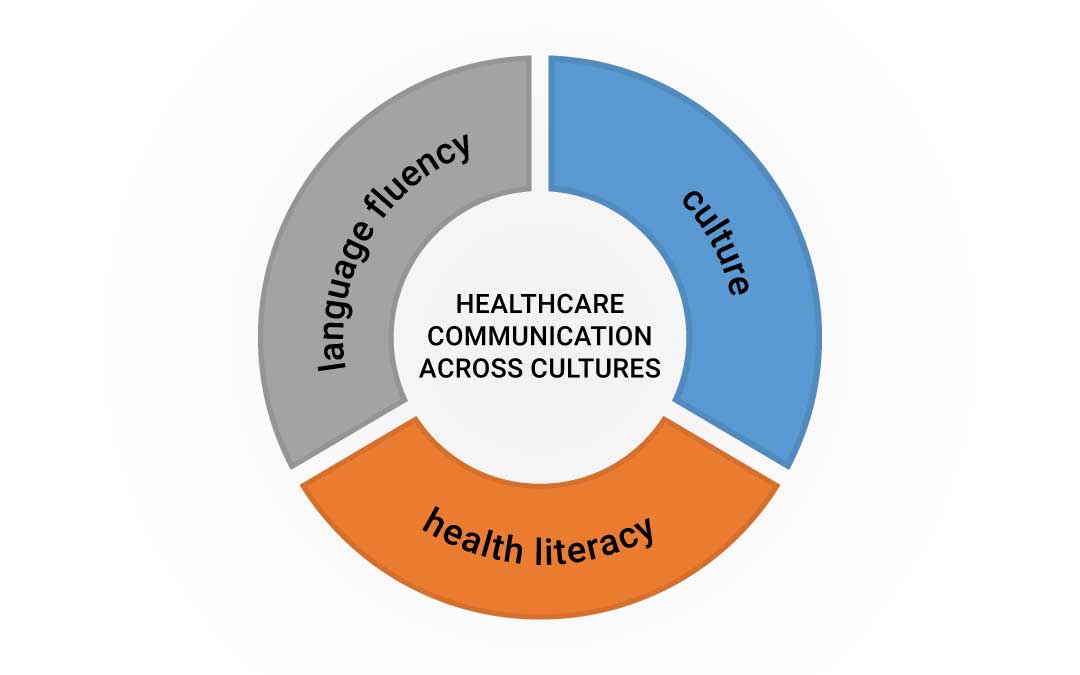The interdependence of competency levels in each area defines the quality of the communication.
Cross-cultural communication in healthcare has 3 vital components: language fluency, culture, and health literacy. The culturally competent provider can assess a patient’s level in each of the 3 areas and adjust communication accordingly, to increase the chance of successful healthcare delivery and outcomes.
1. Health Literacy
Health literacy is how well one understands basic health information and services needed to make appropriate health decisions. Examples include:
- reading and filling out forms
- understanding and following prescriptions and instruction
- understanding tests and results
- reading and understanding health brochures
- navigating health care and insurance systems
- ability to critically analyze health care options based on knowledge gathered
Providers can help develop patients’ health literacy by communicating in plain, simple English, avoiding technical language and jargon, and checking comprehension.
2. Culture
Both the patient and provider bring cultural filters to the healthcare setting. The filter includes beliefs, norms, and practices surrounding wellness, illness and healthcare delivery. When possible, providers and organizations should work with and incorporate patients’ customs and beliefs to increase the likelihood of successful outcomes.
3. Language Fluency
How well does the patient speak English? LEP (limited English proficiency) patients may not fully understand information and instructions, and may lack the skills to ask for clarification. They also face the additional challenge of health-specific vocabulary and terminology, some of which may not exist in their native language. The culturally competent provider is able to quickly assess the language fluency level of LEP patients and apply communication strategies that ensure patient understanding.
Health care agencies and providers must actively work to enhance the patient and provider’s knowledge and abilities in these 3 areas in order to improve healthcare delivery and outcomes.

